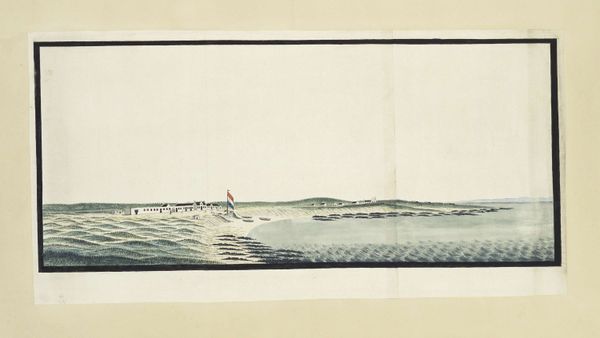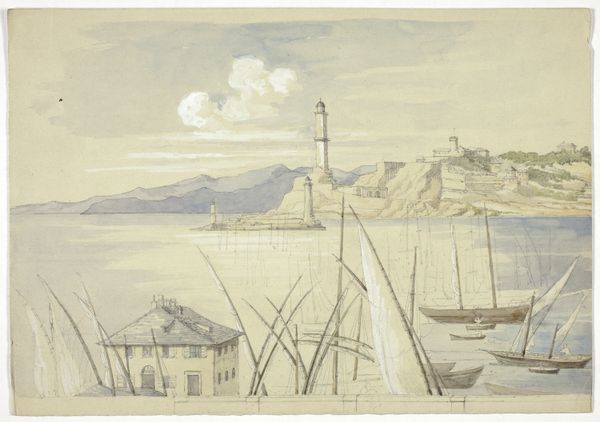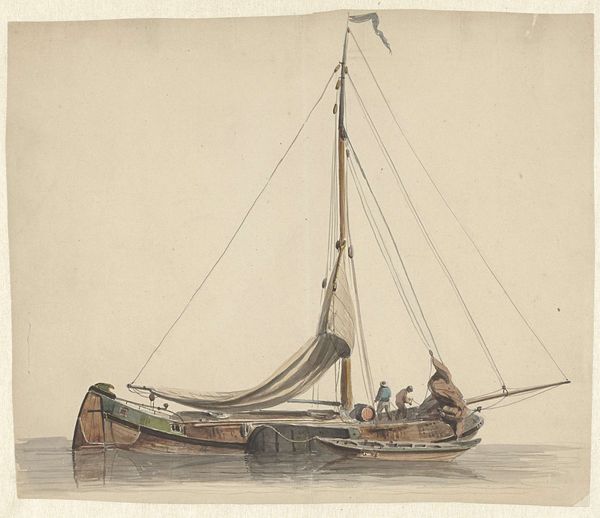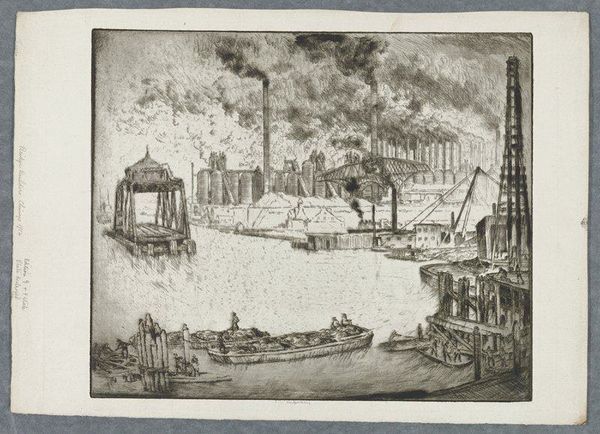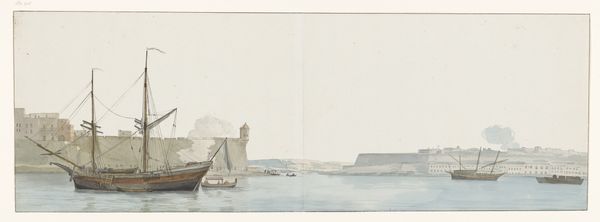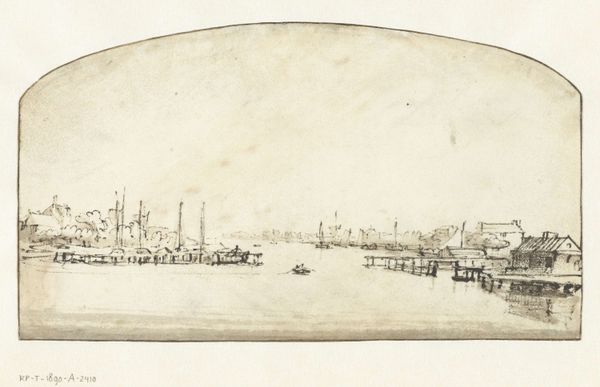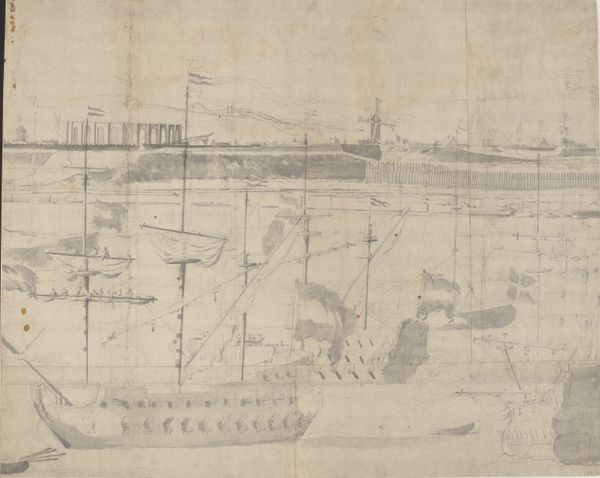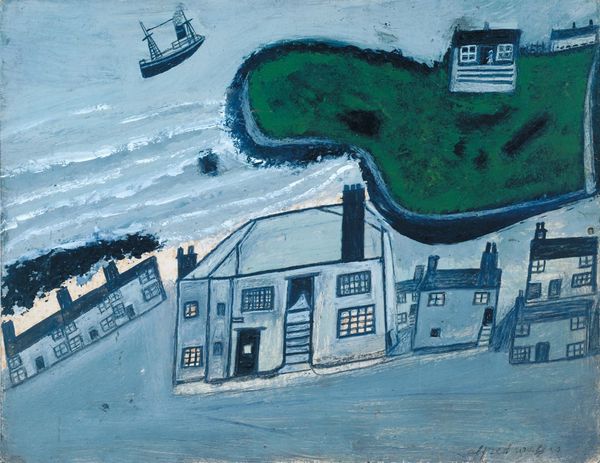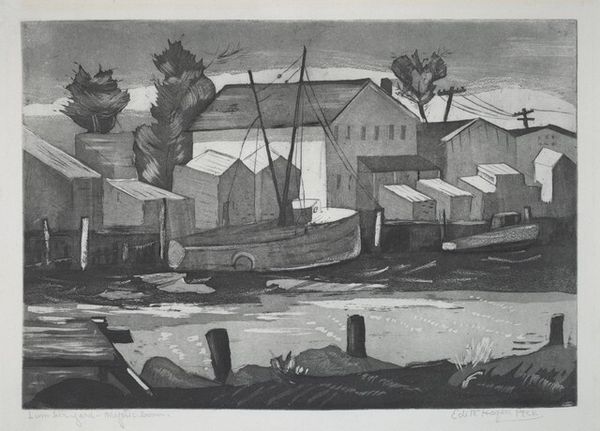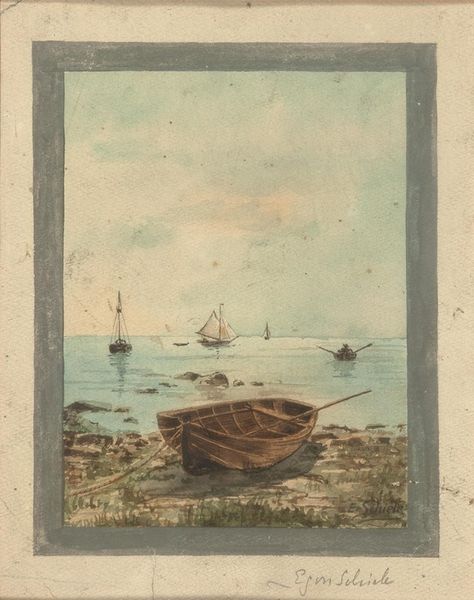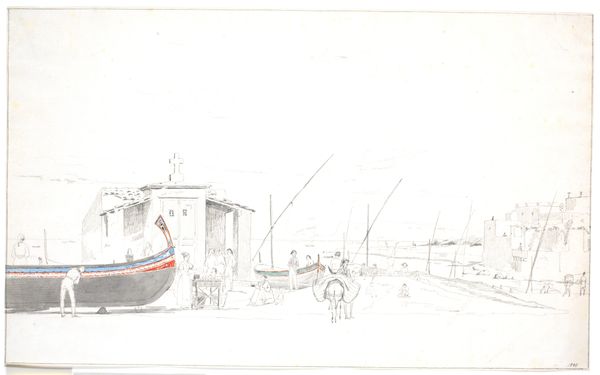
Dimensions: support: 257 x 384 mm frame: 355 x 455 x 44 mm
Copyright: CC-BY-NC-ND 4.0 DEED, Photo: Tate
Editor: Alfred Wallis's "St Ives," painted on cardboard, has a striking immediacy. It feels almost like a child's drawing, yet the composition is so deliberate. What do you see in this piece, considering the history surrounding it? Curator: Wallis, a self-taught painter, started creating art after becoming a widower. His paintings, like this view of St Ives, offer a window into his memories as a mariner. They aren't simply representations; they're emotional landscapes shaped by personal experience and the cultural context of maritime life. Editor: So, it's not just about depicting St Ives, but about what St Ives meant to him? Curator: Exactly. Wallis's work challenges the traditional art world because his art wasn't about technique, but about lived experience. The raw, almost naive style becomes a powerful statement about memory, place, and identity outside of academic training. Editor: I never considered the social implications of his style. It gives the image a whole new layer of meaning. Curator: Indeed, thinking about the art world's gatekeepers encourages considering who gets to tell their stories and how.
Comments
Join the conversation
Join millions of artists and users on Artera today and experience the ultimate creative platform.
tatebritain 7 months ago
⋮
Wallis had worked as seaman, ice cream vendor and scrap merchant before he took up painting as a hobby in his retirement. He lived in St Ives, Cornwall, a fishing community and artists’ colony. There he encountered the painters Ben Nicholson and Christopher Wood and his work was shown with theirs in London. Most of his paintings are of his local environment or of places and events remembered from his past. Gallery label, July 2017
